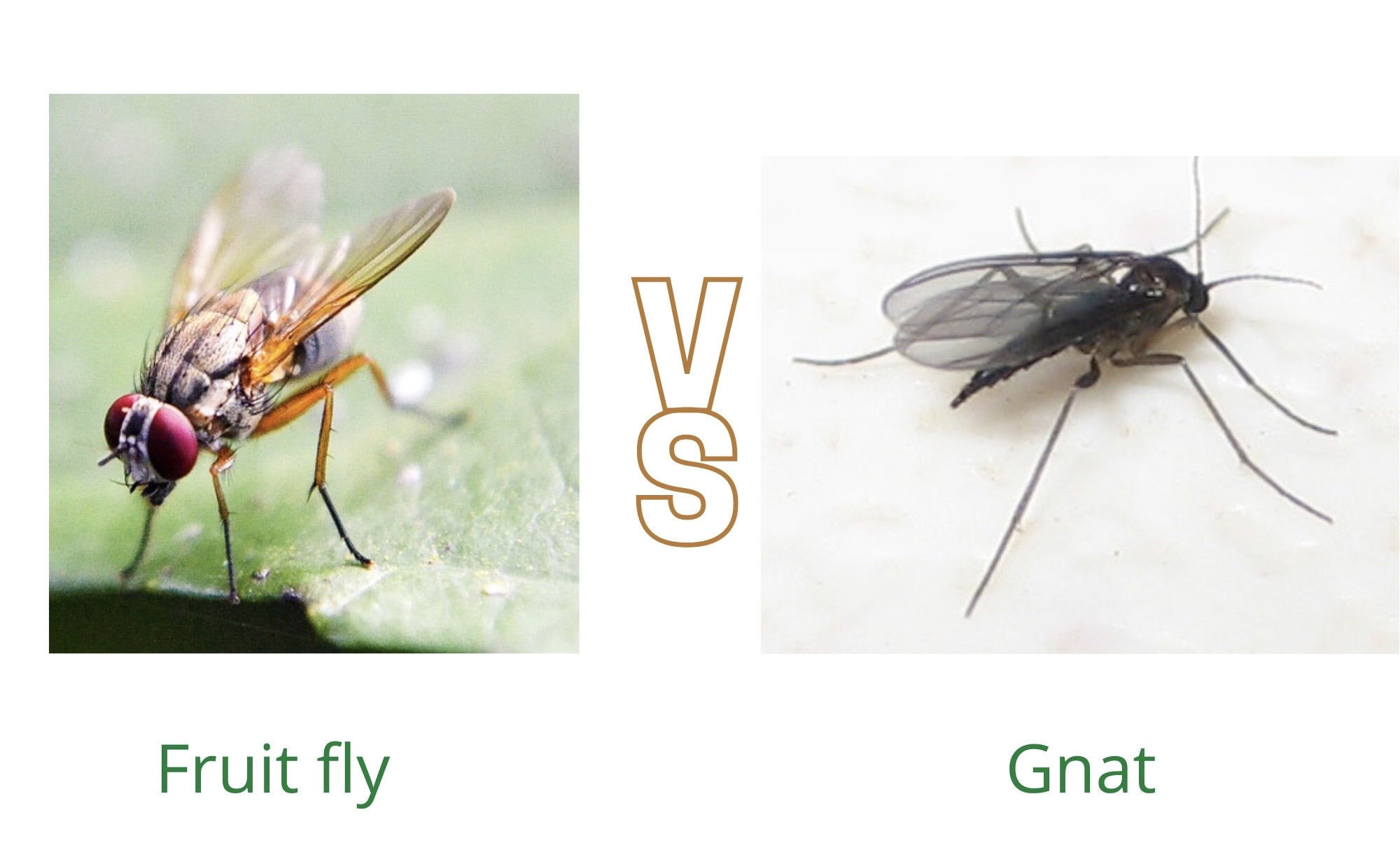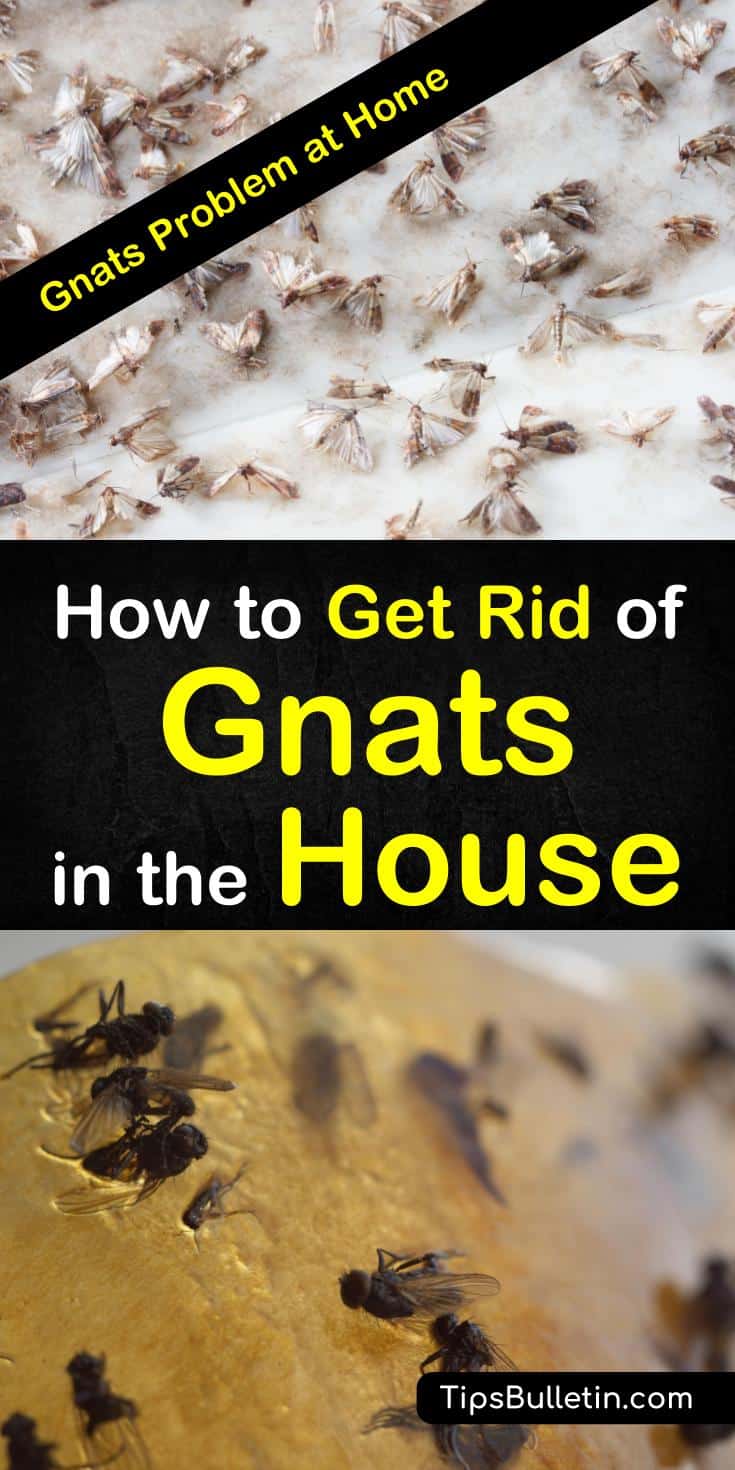Table Of Content

If you are having trouble finding where the gnats or flies are coming from, call a professional integrated pest management specialist to help you deal with the problem. Amanda Rose Newton is a pest specialist and horticulture expert, reviewing pest control and gardening content for The Spruce's Cleaning and Gardening Review Board. Her passion for pest control and sustainable gardening allows her to review plant and pest content for best practices and accuracy.
How to get rid of fungus gnats on plants - Los Angeles Times
How to get rid of fungus gnats on plants.
Posted: Wed, 14 Jul 2021 07:00:00 GMT [source]
Buy a Natural Trap

What’s more, if you don't know how to get rid of gnats, swarms can quickly take over your home, infesting trash cans, plants or decomposing foods. It doesn’t help that gnats breed frequently, so they will always come back if not dealt with immediately. You can also spray the tea tree oil mixture into cracks and crevices where you think the gnats have laid their eggs. Use the natural spray regularly until you no longer have a gnat problem in your kitchen. All the home remedies in this article for exterminating gnats are also effective to get rid of fruit flies from your home.
How to Get Rid of Fungus Gnats: 4 Remedies That Work
Cinnamon powder isn’t just a tasty spice, it can be used to rid plant soil of harmful fungus gnats. Other essential oils which are effective in treating various insect infestations including ants, gnats, and fruit flies are citronella oil, lavender oil, and neem oil. If you need to get rid of gnats in your house, this guide gives some practical advice on some of the best ways of removing gnats and fruit flies naturally. Let the solution sit for at least 20 minutes, then pour hot water down the drain to flush away the suspended dirt and dead gnats. You can also get rid of fungus gnats with hydrogen peroxide in the same way. Another one of the home remedies that you can use to get rid of gnats is essential oils.
Method #2: The Candle & Water Trap
Gnats around the home can become a real nuisance and getting rid of them can be tricky. One or two of these tiny flying creatures can turn into a large infestation of gnats if they start breeding. Gnats and fruit flies are attracted to rotten fruit in garbage bins and because of this, you will often find gnats flying around your kitchen. Gnats love to live in damp places like drains, and there is even a fungus gnat that can destroy the roots of your houseplants. Imagine fruit flies buzzing as you cook dinner, fungus gnats hovering over your houseplants or nasty creatures lingering in your kitchen sink.
Midges are entirely harmless, have no sucking mouthparts, and are easily identified by their fluffy antennae. Whether you're dealing with gnats or one of the many pests mistaken for them, you can prevent an ongoing issue by focusing on sanitation. Once the pest's food source or breeding site is cleaned up (or never allowed to linger in the first place), the issue should be resolved.
How to get rid of gnats
Regarding houseplants, Pangborn says gnats are looking for consistently moist environments where they can lay eggs — and that's why potted plants are so attractive to them. "The trouble comes when the top layer of potting mix doesn't dry out between waterings, since the top layer is where the gnats settle," she says. Gnat infestations typically occur with plants that need a lot of water or plants that are overwatered. Price recommends placing a few tablespoons of apple cider vinegar, a few drops of dish soap, and a tablespoon of sugar in a bowl and then stirring the contents. "Set your bowl in an area where gnats are prevalent, like your kitchen or bathroom," he says. The gnats will be attracted to the sugar and vinegar, but the dish soap will coat their wings making them unable to fly away.
Buy a bug zapper.
Thankfully, unlike with a cold, there are a number of cures to a gnat infestation to get rid of those pesky critters for good! To get rid of them, spread a little honey on bright yellow index cards. Glue the card to a straw or chopstick and stick into the soil of the gnat’s favorite houseplants. Yellow attracts gnats because it’s the color of plants under stress whose defenses are weakened against predators. When the gnats come to investigate, they’ll get stuck in the honey. Fruit flies look like tiny house flies, and they have large, red eyes.
While decomposing organic matter, wastes and sewage from damaged pipes and drains are the perfect breeding ground for gnats. Use cinnamon powder to control gnats and help destroy the larvae in plant soil. To help prevent a fungus gnat infestation, sprinkle enough cinnamon powder around the base of your plants so that there is a visible layer. Repeat every 2-3 weeks to help reduce the number of larvae in the soil and prevent them from growing into adult gnats. Speaking of plants, gnats are generally attracted to houseplants, as well as moisture, sweet-smelling fruit, and garbage. So while indoor plants are a great way to liven up your space, they can also be the reason why you’re spotting gnats.
How to Get Rid of Gnats in the House
Trees are an amazing part of nature, and they have many uses in your yard and garden. You can plant them for a number of reasons, such as to offer a home to birds, to absorb carbon dioxide, to offer privacy, and even to produce fruit. If you want a tree in your yard but don’t want to wait, then this is the guide for you! Here are six fast-growing trees for you to add to your yard or garden. Gnat larvae live under the soil for the first portion of their lives, but they come to the surface when they become adults.
Sometimes a more direct approach is helpful with gnats, especially when you only have a few. For a spot treatment that's effective and easy to put together, combine warm water with a few tablespoons of vinegar and a few drops of dish soap in a spray bottle. Combine well, and spray any gnats you see, whether they're flying or on the counter. If houseplants are the source of your gnat issue, kill off any larvae in the soil of your houseplants by digging down 2 to 3 inches and turning the top of the soil over. Place 1 to 2 inches of sand on top of the soil to discourage standing water and deter gnats from laying eggs.
This natural neem spray is also effective against mosquitoes and can also kill spiders. While most of the gnats that you find in the home are harmless, there are a few species that will bite humans and animals because they need the proteins in your blood to reproduce. The best way to avoid getting uncomfortable and itchy gnat bitesis to prevent them in the first place. Ammonia is hazardous for living organisms, so it will kill all of the gnats that have gathered in your sink. Pour wine that’s past its prime into a small dish; add a couple of drops of dish soap. Gnats are highly unlikely to go away without intervention, says Morgan, which is why it’s important to know how to get rid of gnats.
To kill gnat larvae, try a mixture of soapy water and spray it on your plants’ soil, O’Neill advises. Use one tablespoon of liquid soap (such as dish soap) with one quart of water and spray onto the soil to remove gnat larvae. Fungus gnats are attracted to the color yellow and get stuck in the traps. It’s not a pretty sight, but it is an easy, nontoxic way to eliminate large quantities of adult fungus gnats. It is also a great way to monitor fungus gnats' presence and see if their population has become a problem. Although they look like tiny mosquitoes, fungus gnats are small flies of the Orfelia and Bradysia species.
This should be relatively obvious, as they tend to gather around the problem, which will aid in identifying their type. Use the following ideas to get rid of gnats and learn how to fend them off for good. While these tiny insects are not harmful, they can become a huge nuisance.
If you spot these tiny bugs, you’ll need to know how to get rid of gnats inside your home. Be it rotting fruit, overwatered plants or you simply forgot to wipe up a sugary spill, these can easily attract a swarm of gnats. If all else fails, and you still have a problem of fungus gnats in the roots of your plants, you may have to change the soil to get rid of and prevent a gnat infestation. When you change the soil, make sure that you replace it with good quality soil and check for any signs of larvae and insects before replanting your plants.
Fruit flies are so small they can pass through ordinary screening used to keep other flies away. They are common in houses, especially kitchens, restaurants, and other food-handling sites, attracted to ripening or fermenting fruit, other fly droppings, and uncooked food. Gnats and small flies that appear inside homes are drawn to rotting organic matter, which they use for both a feeding and breeding site. You will want to address as many of these sources as you can to get rid of them. If none of these homemade bug traps seem to work, or if you don’t have all the ingredients present, there are plenty of premade gnat traps available to purchase.
There are a handful of biological controls for fungus gnats, but they are mainly used in greenhouses where plants are being propagated. If a gnat problem gets so out of hand with houseplants that you are considering biological controls, you are probably better off sacrificing your houseplants and starting over. Existing fungus gnat larvae can be trapped using pieces of raw potato. Place the potato pieces flesh side down on the soil, and check under them every couple of days. Remove any feeding larvae, and replace the potato with fresh pieces. Often indoor plants get gnats when plants are being overwatered.

No comments:
Post a Comment